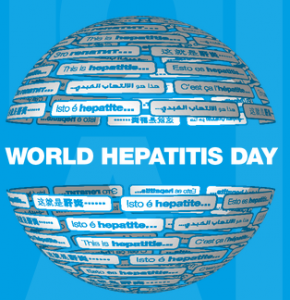
Viral hepatitis kills more people each year than HIV/AIDS.
World Hepatitis Day on July 28 this year will increase awareness and understanding of viral hepatitis and the diseases it causes – affecting hundreds of millions of people around the world.
The World Health Organisation (WHO) hopes to raise awareness of the disease, which causes acute and chronic liver disease, killing almost 1.4 million people each year.
The theme for this year’s World Hepatitis Day is “Think Again”, and campaigners are encouraging people to get tested for hepatitis. They have also outlined a three-point plan including:
- improving screening and prevention methods
- coordinating a global response to the disease
- promoting the inclusion of vaccines (where available) into national immunisation programmes.
In May this year, World Health Assembly delegates from 194 member states adopted a resolution to improve prevention, diagnosis, and treatment of viral hepatitis.
Hepatitis B
It is estimated almost 240 million people are chronically infected with hepatitis B, and more than 780,000 die each year from the consequences of hepatitis B. It is transmitted via contact with blood or other bodily fluids of an infected person and health workers are particularly at risk. The hepatitis B vaccine has been available since 1982, and WHO is campaigning to integrate the vaccine into national immunisation programmes.
Hepatitis C
Found worldwide, but particularly prevalent in North Africa and Central and East Asia, it’s spread via infected blood. Hepatitis C is contracted through unsafe sterilization of medical instruments, sharing needles, or blood transfusions. Around 130-150 million have chronic hepatitis C globally, with 350 000 to 500 000 people dying each year from related liver disease. Antiviral medication can cure hepatitis C infection, but access to diagnosis and treatment is poor.
Hepatitis E
Hepatitis E is spread via unclean food and water, similar to hepatitis A. Every year there are an estimated 20 million hepatitis E infections, over 3 million acute cases of hepatitis E, and 56 600 hepatitis E-related deaths. Hepatitis E is predominantly spread through contaminated water, especially in East and South Asia. China has produced and licensed the first hepatitis E vaccine although it isn’t available worldwide yet.
One on the key messages from WHO this year is that viral hepatitis can be avoided and treated.
